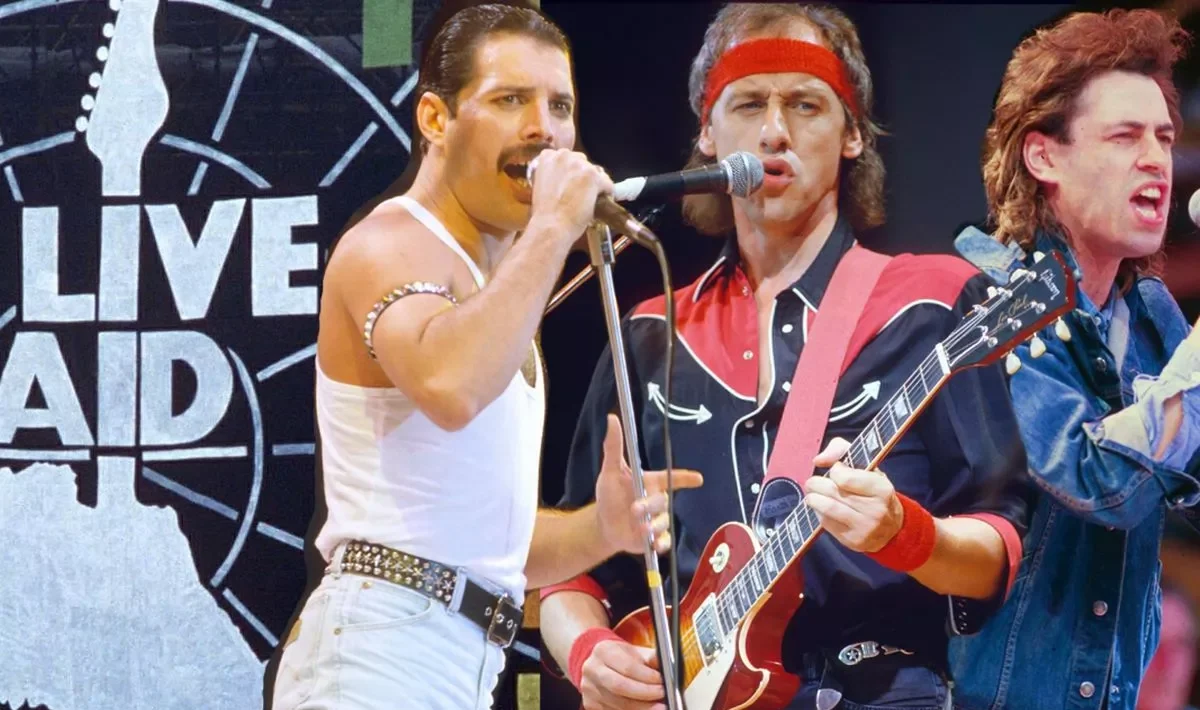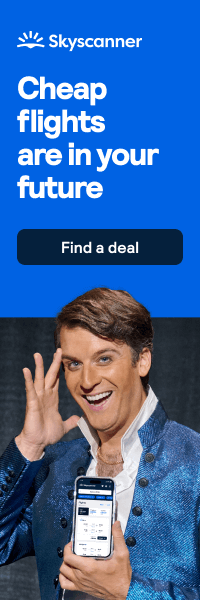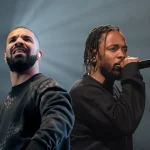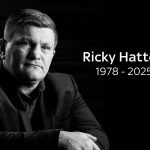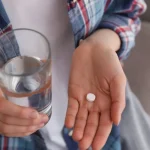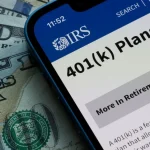Live Aid: 40 Years On – The Day Music United the World.
Can you believe it? This Saturday, July 13, 2025, marks 40 incredible years since Live Aid burst onto our screens and into our hearts. It was more than just a concert; it was a global phenomenon, uniting an estimated 1.5 billion people across the world.
From the iconic Wembley Stadium in London to the vibrant John F. Kennedy Stadium in Philadelphia, music became the heartbeat of hope, raising over $140 million (that’s over £114 million back then!) for the devastating famine in Ethiopia.
It all started with a heavy heart. In late 1984, Bob Geldof, the outspoken frontman of The Boomtown Rats, was deeply affected by the raw, harrowing BBC news reports coming out of Ethiopia. You know, those images that just stick with you?
He felt compelled to act. So, alongside Midge Ure of Ultravox, he penned "Do They Know It's Christmas?" and brought together a constellation of British and Irish stars for Band Aid. The song wasn't just a hit; it was a revelation, raising far more than anyone imagined and sparking a much bigger idea in Geldof's mind: a concert, on a scale never before seen.
Bob Geldof Net Worth 2025: $150M Fortune & How He Earned It
Now, imagine trying to convince the biggest names in music to drop everything and perform for free – globally! Geldof's approach was legendary. He was famously audacious, a bit of a bluffer, and absolutely relentless.
As Live Aid production manager Andy Zweck once shared, Geldof would call one artist, confidently declare that giants like Queen and David Bowie were already in, and then use that "commitment" to reel in the next. It was a brilliant, high-stakes game of bluff that simply worked.

ive Aid 1985 Wembley Stadium & Philadelphia - souvenir prin
But it wasn't just clever tactics. Geldof's burning passion and the undeniable moral urgency of the crisis truly resonated. Artists felt a profound sense of responsibility to use their massive platforms for good. "Do They Know It's Christmas?" had already proven what could be achieved when everyone pulled together.
Even acts like Queen, who were absolutely exhausted from touring, eventually came around. Can you imagine the internal debate? Freddie Mercury, initially hesitant, was reportedly swayed by Brian May, who wisely pointed out how "pretty sad" they'd feel if they woke up the day after Live Aid and hadn't been part of history.
And history they made. What unfolded that day was an unparalleled gathering of musical talent, a truly unforgettable "global jukebox" that effortlessly blended genres and generations.
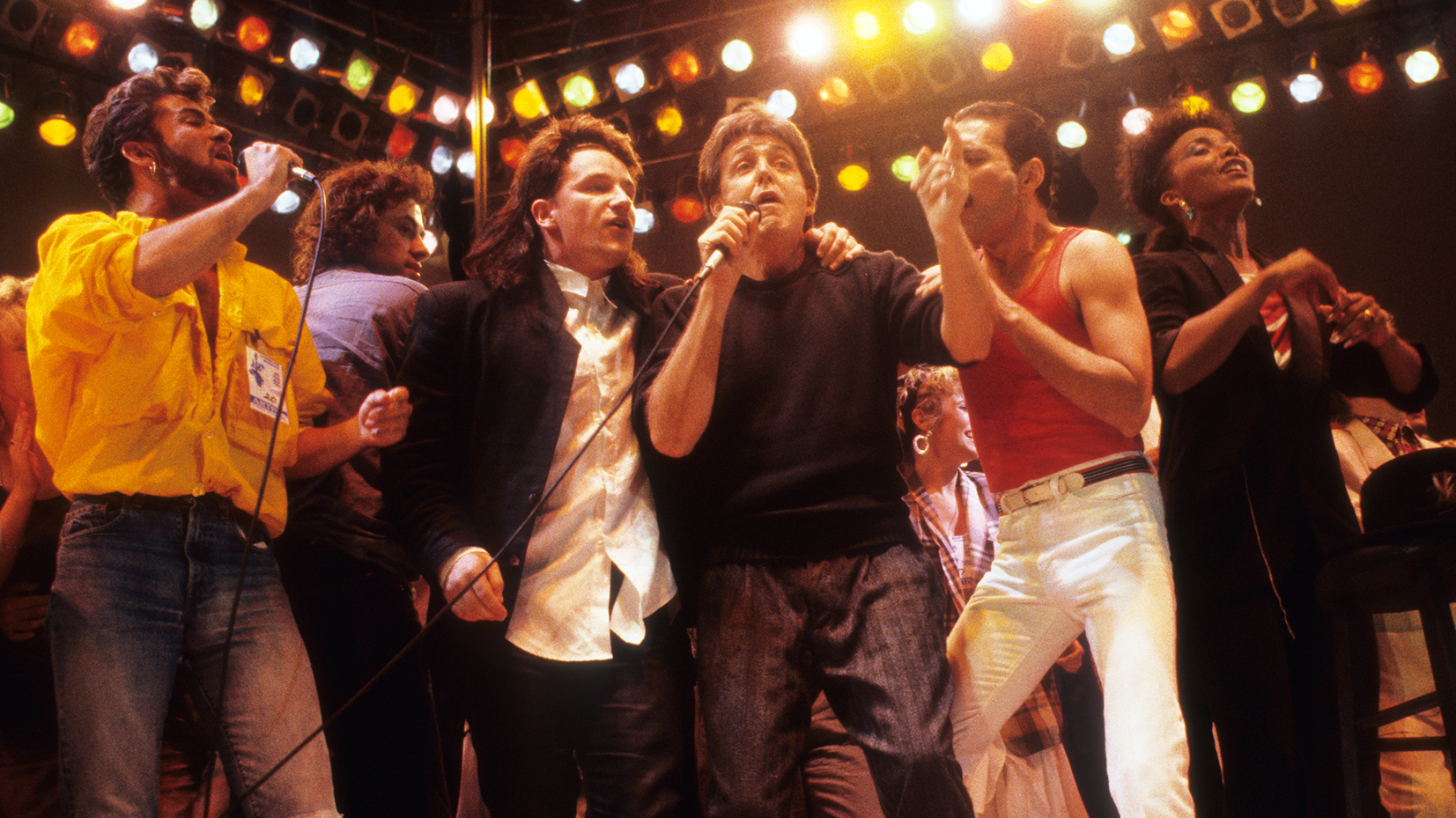
A historic moment at Live Aid 1985 as George Michael, Bono, Paul McCartney, Freddie Mercury, and other legendary artists unite for the concert’s climactic finale. Held simultaneously at Wembley Stadium and JFK Stadium, Live Aid was masterminded by Bob Geldof and raised over $125 million for famine relief in Africa, forever redefining the power of music as a force for global good.
The Unforgettable Line-Up: Live Aid's Stars
It's hard to list them all without feeling a rush of nostalgia. Here's who graced those two iconic stages:
Wembley Stadium, London (a truly British spectacle!):
- Coldstream Guards
- Status Quo (kicking things off with a bang!)
- The Style Council
- The Boomtown Rats (with Bob Geldof himself)
- Adam Ant
- Ultravox
- Spandau Ballet
- Elvis Costello
- Nik Kershaw
- Sade
- Sting (with Phil Collins)
- Phil Collins (doing his solo thing)
- Howard Jones
- Bryan Ferry (with the legendary David Gilmour)
- Paul Young (with the incredible Alison Moyet)
- U2 (their legendary performance!)
- Dire Straits (with Sting again)
- Queen (arguably the show-stealers!)
- David Bowie
- The Who
- Elton John (with Kiki Dee and George Michael)
- Wham!
- Paul McCartney (later joined by Bowie, Geldof, Moyet, and Pete Townshend for a truly special finale)
- The grand Band Aid Finale ("Do They Know It's Christmas?")

Phil Collins delivers a heartfelt performance at Live Aid 1985, one of the few artists to appear at both the London and Philadelphia concerts in a single day. Flying via Concorde, his transatlantic feat became legendary, symbolizing the global reach and urgency of the Bob Geldof-led fundraiser for famine relief in Ethiopia.
JFK Stadium, Philadelphia (where the American icons shone!):
- Bernard Watson
- Joan Baez
- The Hooters
- The Four Tops
- Billy Ocean
- Black Sabbath
- Run-DMC
- Rick Springfield
- REO Speedwagon
- Crosby, Stills & Nash
- Judas Priest
- Bryan Adams
- The Beach Boys
- George Thorogood and the Destroyers (with the greats Bo Diddley and Albert Collins)
- Simple Minds
- The Pretenders
- Santana (with Pat Metheny)
- Ashford & Simpson (with Teddy Pendergrass)
- Madonna (a true superstar in the making)
- Tom Petty and the Heartbreakers
- Kenny Loggins
- The Cars
- Neil Young
- The Power Station
- Thompson Twins (with Steve Stevens, Nile Rodgers, and Madonna)
- Eric Clapton
- Phil Collins (after his famous Concorde dash from London!)
- Led Zeppelin (a rare reunion with Phil Collins on drums and Tony Thompson)
- Duran Duran
- Patti LaBelle
- Hall & Oates (with Eddie Kendricks and David Ruffin)
- Mick Jagger (with the force of nature, Tina Turner)
- Bob Dylan (with rock legends Keith Richards and Ron Wood)
- The powerful USA for Africa Finale ("We Are The World")
Live Aid wasn't just a series of concerts; it was a monumental moment that proved the incredible power of music and the human spirit when faced with immense suffering. Forty years on, its legacy continues to resonate, reminding us that when we come together, truly anything is possible. It’s a powerful lesson, don’t you think?
People Also Ask: Your Live Aid Questions Answered
What band stole the show at Live Aid?
While many delivered memorable performances, Queen is almost universally credited with "stealing the show" at Wembley. Freddie Mercury's electrifying stage presence, incredible vocal command, and the band's perfectly honed set, especially the famous "Ay-Oh" crowd interaction, left an indelible mark and revitalized their career.
Did Princess Diana go to Live Aid?
Yes, Princess Diana and Prince Charles were indeed in attendance at Wembley Stadium. They were seen in the royal box and their presence added to the immense prestige and global appeal of the event.
Why was Queen so big at Live Aid?
Queen's success at Live Aid stemmed from a combination of factors:
- Freddie Mercury's Mastery: His unparalleled charisma, vocal power, and ability to connect with and command such a massive crowd were simply astounding.
- Tight Performance: Despite being given a relatively short slot, they delivered a meticulously rehearsed and incredibly impactful set of their greatest hits, designed for maximum audience engagement.
- Visual & Sound Impact: Their performance looked and sounded fantastic, which was crucial for the live television broadcast to a global audience. They truly made the most of their moment.
Why is Live Aid 1985 so famous?
Live Aid's fame comes from its unprecedented scale and impact:
- Global Reach: It was the first truly global benefit concert, broadcast to an estimated 1.5 billion people across over 100 countries.
- Star Power: It featured an unparalleled lineup of the biggest names in music performing simultaneously across two continents.
- Humanitarian Mission: It successfully raised a vast amount of money and, more importantly, brought global awareness to the devastating famine in Ethiopia, inspiring immense public generosity.
- Cultural Moment: It became a defining cultural event of the 1980s, showcasing the power of music for social good.
Who was considered the best band at Live Aid?
Again, Queen is overwhelmingly considered to have delivered the most impactful and "best" performance at Live Aid. While U2's Bono had a powerful, spontaneous moment with a fan, and David Bowie delivered a strong set, Queen's set is often cited as one of the greatest live performances in rock history due to its energy, precision, and Mercury's iconic showmanship.
Why did Led Zeppelin sound bad at Live Aid?
Led Zeppelin's highly anticipated reunion performance at Live Aid is widely considered to be one of the show's biggest disappointments, largely due to:
- Lack of Rehearsal: The band members (Jimmy Page, Robert Plant, John Paul Jones) had barely rehearsed together, certainly not with the intensity needed for such a high-stakes performance.
- Technical Issues: Reports suggest significant sound and monitor problems on stage, making it difficult for the musicians to hear themselves and each other.
- Jimmy Page's Condition: There are widespread accounts that Jimmy Page was struggling with substance abuse at the time, affecting his guitar playing.
- Robert Plant's Voice: Plant's voice was reportedly strained from recent solo touring.
- Two Drummers: The decision to have two drummers (Phil Collins and Tony Thompson) who weren't accustomed to playing together with Zeppelin's material contributed to a messy, uncoordinated sound. Phil Collins himself later expressed his discomfort with the performance.



